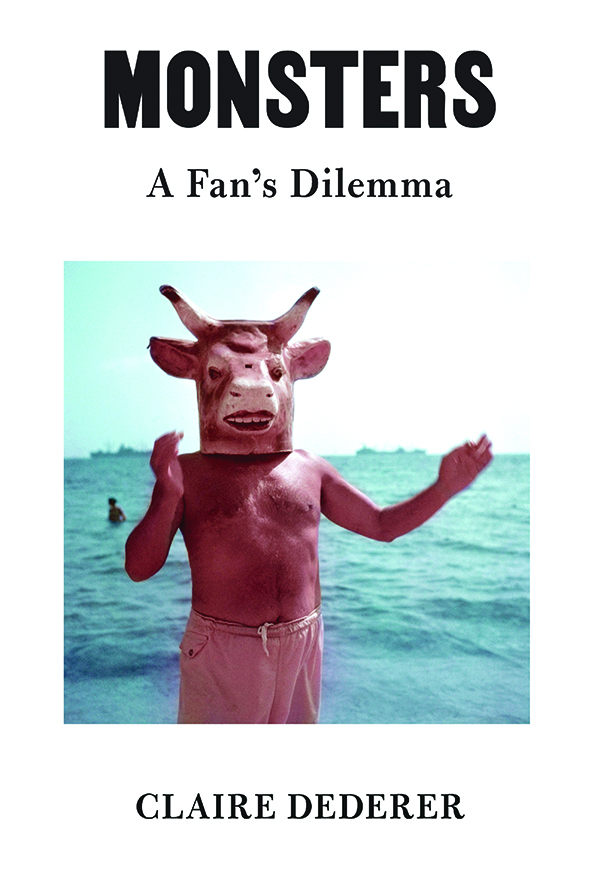
It’s embarrassing you need a book to tell you it’s OK to like good art by bad people
Stefan Beck
In 2017, the essayist and critic Claire Dederer wrestled at length, in the pages of the Paris Review, with the question, “What do we do with the art of monstrous men?” How should we engage with the work of Roman Polanski, Woody Allen, Michael Jackson, Miles Davis, and other disgraced geniuses? What are the rules? Are there any?

Dederer’s new book, Monsters: A Fan’s Dilemma, expands on that essay, hacking deeper into the dismal fens and shadowy canebrakes of masculine creativity and evil. She bags a handful of monstrous women, too — if you’re going after Grendel, you may as well get his mother while you’re at it — and, along the way, finds the courage and self-awareness to ask questions such as “Have I ever been a monster?” and “Do I still have principles, even if I’m willing to make an exception for David Bowie?”
BIDEN CAMPAIGN TO SPOTLIGHT GREEN POLICIES IN APPEAL TO YOUNGER VOTERS
Monsters isn’t a persuasive book, not because it fails to persuade but because it sensibly declines to try. Dederer spends a lot of time recounting discussions with friends, both men (dogmatic and clueless) and women (irrepressibly emotional), about their own reckoning with “art monsters.” The only firm conclusion Dederer arrives at is that we should make up our own minds and consume art as individuals, guided by personal preferences and — what’s it called again? — intellectual freedom.
Many people share this attitude, and many of them came by it with far less agonizing and teeth-gnashing than are on offer in Dederer’s book. Hence, Monsters can’t help being salutary and underwhelming in equal measure. “Dederer is a fearless champion of free thought” and “No duh” are both appropriate reactions to her argument, which is not really an argument, anyway, so much as a free-associative ramble through Dederer’s likes and dislikes, her protean ethics, and her anxious relationship to authority.
Dederer’s exploration of her relationship with her favorite artists helpfully illustrates the distinction between appreciation and fandom. She values the unsettling oeuvre of Polanski, the child rapist who gave us Knife in the Water, Rosemary’s Baby, and Chinatown. Of Allen, however, she is a card-carrying fan who feels that Allen stands in for her own aesthetic and temperament. The same goes for Bowie, whose defloration of a 15-year-old girl taints not only his legacy but also the faith and identity of his true believers. How could men like Bowie, a creative inspiration and a salve to the alienation of countless young misfits, use their power and charisma to exploit a child? To Dederer, it constitutes both an individual crime and a betrayal en masse.
It can be tedious to learn why someone loves artists and art that pretty much everyone else does, too. Listening to middle-aged intellectuals rank their favorite Allen films is just slightly preferable to being smothered with a public-radio tote bag. But Dederer wants to dramatize the mental contortions that fandom requires in a time when biography “falls on your head all day long,” when the most horrific details of an artist’s transgressions are a Google search away.
Fair enough. Is it news, though, that human beings are shamelessly inconsistent in their application of moral and ethical standards? Identity itself is constructed, often shoddily, out of just such inconsistency.
Do you vote? Watch sports? Drive a Volkswagen? Use products or medications tested on animals? Spend all day on a phone assembled by Chinese slaves in a factory festooned with suicide netting? Maybe worrying about your favorite artists isn’t a noble act of self-criticism. Maybe, just maybe, it’s a bit of misdirection or scapegoating, a means of pretending that you aren’t compromised down to the soles of your sweatshop sneakers. As Garth Greenwell wrote in a brilliant piece defending Philip Roth’s Sabbath’s Theater, “People who commit sexual crimes should be locked up forever, some of my friends believe, who also believe that prisons should be abolished.” Art can remind us how often the human condition is to make no sense at all.
Reading between the lines, Dederer’s deepest uneasiness isn’t about morality but about authority. Her inquiry is motivated by a desire, stated early on, to figure out “how I might behave correctly.” She imagines an “online calculator,” the user of which “would enter the name of an artist, whereupon the calculator would assess the heinousness of the crime versus the greatness of the art and spit out a verdict: you could or could not consume the work of this artist.”
This concern for rectitude doesn’t, frankly, feel particularly moral. It comes across as fear of leaving oneself open to attack. That the experience of art is so often conceived of as “consumption,” wherein the work is a “product” and not a locus of engagement with another human soul, however flawed, is the only reason a book like this needs to exist in the first place. As Rob says in High Fidelity, “What really matters is what you like, not what you are like.” Dederer’s search for rules is identity politics by other means.
“The way you consume art doesn’t make you a bad person, or a good one,” she decides, and this is framed as a fact and not a private belief. “You’ll have to find some other way to accomplish that.” This is a time-honored gambit: “discovering” for the use of one’s politico-intellectual friends an idea already ubiquitous among her foes. She often speaks on behalf of a “we” while chastising herself for it: Dederer speaks of her monsters as men “whose morals we loathe.” “We is the voice of the middlebrow male critic.” Sure, but “we” has also been the voice of the scolding Slate headline or Salon take, and that is the “we” Dederer wishes to reassure that rules are for fools.
Dederer, proposing a lineup of monsters, notes in passing that “if we start listing athletes we’ll never stop.” It’s akin to saying, “If we look at that bigger problem, we’ll never have time for this smaller one, the one that affects people like me.” Of course, the real reason many readers will let themselves breeze past that excuse is that it’s easy to see the place testosterone and aggression have in sports. It is harder, for some reason, to see the role that self-loathing, guilt, and a host of other ugly feelings have in art. In a perfect world, perhaps, genius would be a reward for goodness and wisdom — and their habitual application to real life. In the world as it is, bad people may make better artists because they are familiar from the inside with a broader range of human feeling and behavior.
What is art for? Yes, art can “teach us how to live,” but what a blinkered mind that thinks it stops there. Dederer’s book suggests a new question: Is it OK to consume bad art by good people? Should we trust their necessarily limited and speculative account of what happens in other minds, other hearts? Should we go to art for canned epiphanies, smug comeuppances, and fast-forward personal growth? Should we read books and watch movies that have been submitted to sensitivity readers and focus groups? Should we treat our attention like a reward we bestow on artists in exchange for right thinking and good behavior? As Dederer says, do whatever you want. But the greatest art is a temple with bones mixed in the mortar, the best we have to offer built high on the worst we’ve ever done.
CLICK HERE TO READ MORE FROM THE WASHINGTON EXAMINER
Stefan Beck is a writer living in Hudson, New York.
